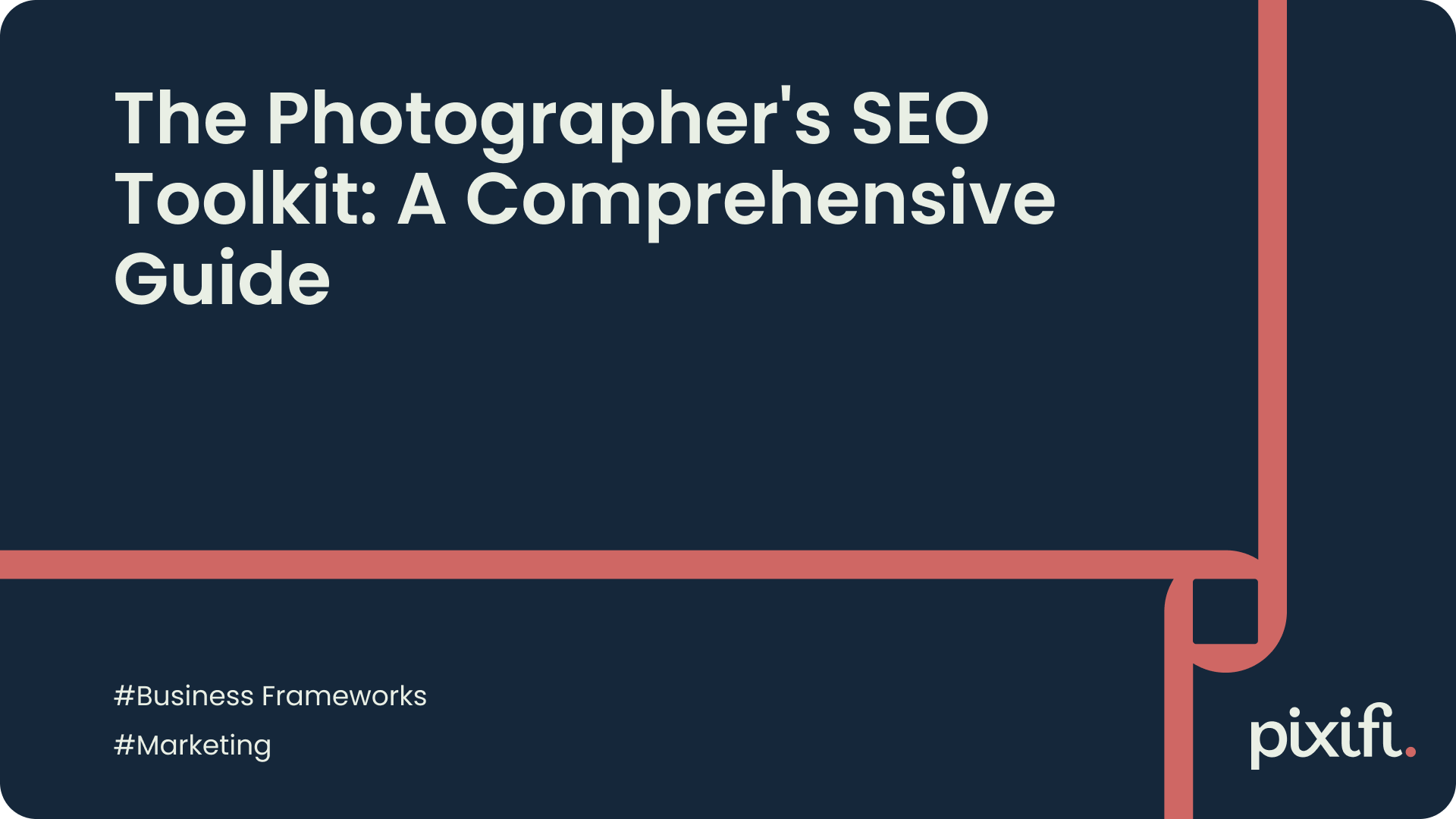The Photographer’s Guide to Client Relationship Management: Why CRM Is Essential

Building strong relationships with clients is vital for any photography business. One effective way to accomplish this is through Client Relationship Management (CRM) systems. In this guide, we will explore the importance of CRM in the photography industry, the key features of a good CRM system for photographers, the benefits of using CRM in your business, and how to choose the right CRM for your photography business.
Understanding the Importance of CRM in Photography
In order to fully grasp the significance of CRM in the photography industry, it is essential to define what CRM means in this context.
CRM, in the photography industry, refers to managing client interactions, communications, and relationships using specialized software. By implementing a CRM system, photographers can effectively track and nurture relationships with their clients, resulting in increased client retention and satisfaction.
Defining CRM in the Photography Industry
CRM in the photography industry involves utilizing software to manage various aspects of client interactions. Such software enables photographers to organize client contact information, capture client preferences and details, and track communication history.
With an efficient CRM system, photographers can easily access client information, personalize their services, and provide exceptional customer experiences.
The Role of CRM in Client Retention
Client retention is crucial for the long-term success of any business, including photography. A reliable CRM system plays a significant role in enhancing client retention rates.
By using a CRM system, photographers can keep track of client preferences, past orders, and communication history. This information helps photographers to personalize their services, anticipate client needs, and ensure consistent quality in their work, ultimately fostering stronger client relationships and increasing client loyalty.
Moreover, a robust CRM system allows photographers to stay connected with their clients even after the completion of a project. By sending personalized emails, newsletters, or even small tokens of appreciation, photographers can maintain a strong bond with their clients. This ongoing communication not only keeps the photographer in the client's mind but also creates opportunities for future collaborations and referrals.
Furthermore, a CRM system can also assist photographers in identifying potential upselling or cross-selling opportunities. By analyzing client data, photographers can determine which products or services are most popular among their clients and tailor their offerings accordingly. This not only increases revenue but also showcases the photographer's understanding of their clients' needs and preferences.
Key Features of a Good CRM System for Photographers
When selecting a CRM system for your photography business, it is important to consider the following key features:
Contact Management for Photographers
A good CRM system should provide comprehensive contact management capabilities for photographers. This includes storing client information, managing contact details, and organizing client preferences.
By having all relevant client information readily available, photographers can efficiently communicate with their clients and deliver personalized experiences.
Moreover, advanced CRM systems offer segmentation tools that allow photographers to categorize clients based on various criteria such as event type, location, or budget. This segmentation enables targeted marketing campaigns and personalized communication strategies tailored to different client groups.
Scheduling and Booking Features
An effective CRM system for photographers should include scheduling and booking features. These features allow photographers to manage appointments, track availability, and send reminders to clients.
Furthermore, some CRM platforms integrate with calendar applications like Google Calendar or Outlook, providing seamless synchronization of appointments and availability. This integration minimizes the risk of scheduling conflicts and ensures that photographers stay organized and punctual.
Invoice and Payment Tracking
A good CRM system should offer invoice and payment tracking capabilities. This allows photographers to create and send invoices, track payment status, and manage financial records.
Efficient invoice and payment tracking ensures that photographers receive timely payments and helps maintain transparent financial transactions with clients.
Additionally, some CRM systems offer automated payment reminders and recurring billing options, streamlining the invoicing process and improving cash flow management for photography businesses.
Benefits of Using CRM in Photography Business
Implementing CRM software in your photography business can offer various benefits:
Streamlining Business Operations
A CRM system helps streamline business operations by centralizing client information, automating repetitive tasks, and facilitating efficient communication.
By automating administrative tasks, photographers can dedicate more time to their craft and provide better client experiences.
Additionally, with the ability to track and analyze data through CRM software, photographers can gain valuable insights into their business operations. They can identify trends, preferences, and areas for improvement, leading to more informed decision-making and increased efficiency.
Enhancing Client Communication
A CRM system enables photographers to keep track of client communication history and preferences, ensuring personalized and meaningful interactions.
By using client-specific information, photographers can engage with clients on a deeper level, building trust and loyalty.
Moreover, CRM software can also help in scheduling follow-ups, sending personalized messages, and managing inquiries, allowing photographers to maintain consistent and timely communication with clients, ultimately strengthening relationships.
Improving Customer Satisfaction and Loyalty
Through effective CRM implementation, photographers can consistently provide exceptional customer experiences.
By understanding and fulfilling client needs, photographers can exceed expectations, resulting in higher levels of customer satisfaction and increased client loyalty.
Furthermore, CRM systems can aid in creating targeted marketing campaigns based on client preferences and behaviors. By delivering relevant content and offers to clients, photographers can enhance engagement, retention, and ultimately, customer loyalty.
Choosing the Right CRM for Your Photography Business
When selecting the right CRM system for your photography business, it is essential to consider your specific business needs and evaluate different options.
Running a successful photography business requires more than just capturing stunning images. It involves managing client relationships, organizing bookings, and staying on top of your financials. That's where a Customer Relationship Management (CRM) system comes in.
Assessing Your Business Needs
Start by assessing your business requirements and identifying the features that are most important to your photography operations.
Are you a solo photographer with a small client base, or do you have a team of photographers managing a large volume of clients? Understanding the size of your client base is crucial in determining the scalability of the CRM system you choose.
Consider factors such as the complexity of your services. Do you offer different packages, add-ons, or specialized shoots? A CRM system that allows you to customize your offerings and track client preferences can be a game-changer.
Of course, budget is always a consideration. While it's tempting to go for the most feature-rich CRM system, it's important to find a balance between functionality and affordability.
Comparing Different CRM Systems
Research and compare different CRM systems available in the market. Look at factors such as user-friendliness, integration capabilities, customer support, and pricing.
Reading reviews and seeking recommendations from fellow photographers can provide valuable insights into the pros and cons of different CRM systems. Additionally, requesting demos allows you to get a hands-on experience and see if the system aligns with your workflow.
Integration capabilities are crucial, especially if you already use other software tools for accounting, scheduling, or marketing. Ensure that the CRM system you choose can seamlessly integrate with your existing tools, saving you time and effort.
Implementing CRM in Your Business Operations
Once you have chosen a CRM system, it is crucial to effectively implement it into your business operations.
Training yourself and your staff on how to use the CRM system efficiently is essential to maximize its benefits. Take advantage of any training resources provided by the CRM provider, and encourage your team to embrace the system.
Migrating existing client data into the CRM system is a critical step. Ensure that all relevant information, such as contact details, past bookings, and preferences, is transferred accurately. This will allow you to have a comprehensive view of each client and provide personalized experiences.
Establishing consistent processes for data entry and management is key to maintaining data integrity. Set guidelines for your team on how to input and update client information, ensuring that everyone follows the same standards.
Regularly evaluate the effectiveness of the CRM system and make necessary adjustments to maximize its benefits for your photography business. As your business grows and evolves, your CRM needs may change. Stay proactive in adapting the system to meet your evolving needs.
By embracing CRM and utilizing the right software, photographers can streamline their operations, optimize client relationships, and ultimately elevate their photography business to new heights.
Looking for an easier way to manage and grow your studio? Experience a platform built by a photographer, for photographers. Try it free for 2 weeks.











